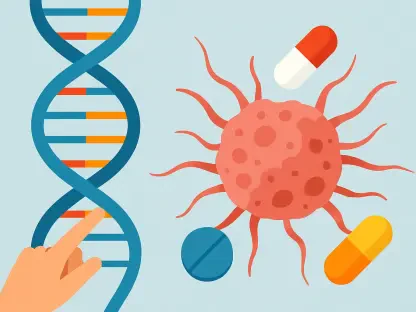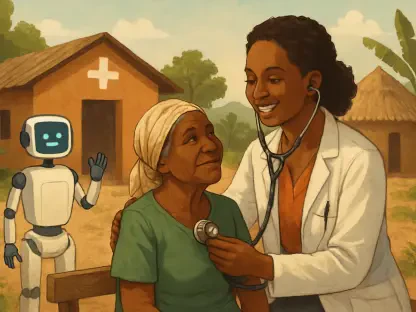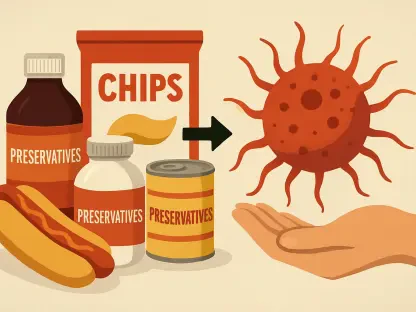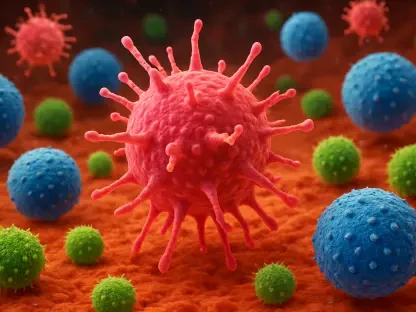The cell and gene therapy (CGT) market is undergoing rapid expansion as it transforms healthcare with innovative treatments for previously incurable diseases. This exhilarating growth is projected to reach $28 billion by the year 2030, marking a significant milestone. Experts attribute this remarkable expansion to various groundbreaking technological advancements within the industry, including gene editing and novel viral vectors. These technologies are reshaping the landscape of therapeutic possibilities, offering promising alternatives to conventional treatment methods. One standout development in CGT’s journey is the creation of chimeric antigen receptor (CAR)-T cell therapies, which are revolutionizing the way cancer is treated. As a result, pharmaceutical giants such as Novartis and Gilead Sciences have been pioneering efforts, utilizing CAR-T therapies to address complex oncological challenges. This progress, however, comes with its fair share of hurdles, especially relating to manufacturing bottlenecks and a shortage of automated systems.
Key Players and Technological Advancements
Novartis emerges as a key player in the cell and gene therapy domain, propelled by its CAR-T therapy, Kymriah, and its gene therapy drug, Zolgensma. These innovative treatments exemplify the company’s strategic focus on oncology, positioning it at the forefront of this burgeoning market. Novartis holds an impressive 17% of the market share and is poised for remarkable growth with an expected compound annual growth rate (CAGR) of 15%. Similarly, Gilead Sciences plays a pivotal role, bolstering its portfolio with CAR-T therapies like Yescarta and Tecartus, which are addressing critical gaps in cancer treatment by leveraging patient-specific approaches. The personalized nature of these therapies is reshaping how diseases are targeted, promising significant improvements in patient outcomes. Advances in gene editing and the development of viral vectors further enhance the capabilities of CAR-T therapies, leading the charge toward more effective and efficient treatments. Despite these technological breakthroughs, manufacturing challenges persist due to the intricacies involved in producing tailor-made therapies, often resulting in bottlenecks that delay widespread adoption.
Challenges and Growth Opportunities Beyond Oncology
Despite the strides being made in oncology, the CGT arena is branching out to address challenges in cardiology, hematology, and rare genetic diseases. The industry’s growth is bolstered by innovative treatments targeting conditions such as amyotrophic lateral sclerosis (ALS), demonstrating the broader potential for CGT applications. These therapies, while technically challenging, have shown higher success rates compared to traditional drug options, capturing the attention of researchers and clinicians alike. Nevertheless, the personalized nature of many CGT products leads to manufacturing obstacles. The shortage of automated systems and standardized protocols results in inefficiencies that hinder the industry’s ability to fully capitalize on the potential of these groundbreaking treatments. As manufacturers strive to improve processes, a new focus on harmonizing methodologies is crucial for accelerating development timelines and boosting accessibility. Insights into future manufacturing methodologies are eagerly anticipated, with expectations for advancements in process scalability aimed at meeting increasing demands. A forthcoming report from a related publisher is slated to offer valuable insights into these strategies, promising to shed light on upcoming manufacturing innovations.
Looking Ahead and Overcoming Obstacles
The cell and gene therapy (CGT) market is experiencing rapid growth as it revolutionizes healthcare with innovative treatments for diseases once thought incurable. This thrilling expansion is anticipated to hit $28 billion by 2030, marking a significant achievement for the field. Experts credit this growth to groundbreaking technological advancements, including gene editing and new viral vectors. These innovations are transforming therapeutic possibilities, presenting exciting alternatives to traditional treatment methods. One notable advancement in CGT is the development of chimeric antigen receptor (CAR)-T cell therapies, which are changing how cancer is approached. Pharmaceutical leaders like Novartis and Gilead Sciences have been at the forefront, leveraging CAR-T therapies in tackling complex cancer-related issues. However, this progress is not without challenges, such as manufacturing hurdles and a lack of automated systems. These obstacles highlight the ongoing need for innovative solutions to fully realize CGT’s potential in the medical field.









